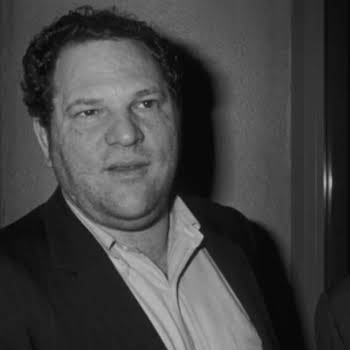‘Baby Reindeer’ and our problematic response to real-life trauma
'Baby Reindeer' gave society a choice: embrace new awareness around stalking, rape and the myth of the “perfect victim”... Or perpetuate these myths and turning a man’s trauma into a public spectacle for our entertainment. Society chose the latter.
This isn’t the piece I wanted to write about Baby Reindeer.
When I watched Richard Gadd’s now viral Netflix show, I was mesmerised. Written by Gadd and based on his own experiences, Baby Reindeer sees Gadd play Donny Dunn, a struggling comedian who meets a woman, Martha (played by the remarkable Jessica Gunning) in the bar where he works, only for her to become obsessed with him, stalking him for four years. Donny’s response to Martha is complicated by a range of factors: his pity towards her; his low self-esteem and desire for validation, which Martha offers in dysfunctional abundance; the police’s utter refusal to take Donny’s reports seriously; and Donny’s complicated emotional state in the aftermath of a sexual assault by a prominent male TV writer.
Featuring incredible performances and a messy, flawed protagonist, I was immediately drawn into Baby Reindeer, awestruck by how realistic Donny felt as a character: his struggles, his shame, his sometimes baffling decisions, and the often confusing and counter-intuitive way he responds to both Martha and his rapist, Darrien.
I binged the series and by the final episode, my head was swirling with aspects of the show I wanted to write about and discuss. This piece thus could have taken many forms, including the representation of gender and stalking in film and television; the representation of fat women’s sexuality onscreen; and the show’s questionable representation of gay men. But most of all, I wanted to write about how Baby Reindeer tackles and dismantles our idea of the “perfect victim”, in stalking and more commonly, in sexual violence cases.
The “Perfect Victim”
In a rape culture, empathy, support, justice and belief are too often reserved only for people who fulfil the role of the “Perfect Victim”. Most often a woman, the “Perfect Victim” is a respectable and likeable person (preferably also attractive and from a middle-class family) with an unblemished past. Chaste or with a limited sexual history, the “Perfect Victim” is never sexually adventurous or “promiscuous” and was not looking for sex at the time of their assault. Nor were they drinking, under the influence of drugs, wearing anything revealing, in a relationship with their attacker, or in a “risky” environment. After being assaulted or raped, the “Perfect Victim” immediately went to the police with a picture-perfect memory of the incident, and reacted to their assault with a grief that made them shrink away in tears, but never made them angry, unpredictable, paranoid or act out in any way that could be deemed as unfeminine or inconvenient. The “Perfect Victim” remains calm and likeable even under scrutiny and their actions feel logical, predictable and orderly at all times.
A piece of fictionalised art is being debated on television by the person who inspired the perpetrator.
Hopefully it’s not necessary to point out that the standard set by the ideal of the “Perfect Victim” is nearly impossible to reach, which is by design. Imperfect victims – aka the vast majority of us – are not to be believed, and if society doesn’t believe the vast majority of victims, then we don’t have to address the epidemic of stalking or sexual violence in society.
I was not a “Perfect Victim”, in my abusive relationships nor in my sexual assaults. Yes, plural to both, which is another count against me – “Perfect Victims” only have one bad experience, because any more and you’re no longer credible. I was never going to reach the standard of the “Perfect Victim”, and this is why I was so drawn to Baby Reindeer because neither was Donny.
Donny’s imperfect realism

Donny flirts with Martha, liking the attention sometimes. When he begins to realise she is acting obsessive, he goes to her house to get a more fully rounded idea of who she is, which is later used to argue that he was, in fact, following her. He’s kind to her sometimes, cruel at others. When the police refuse to help him, Donny lies to Martha and encourages her to send him more messages as he tries to gather concrete evidence, which backfires. He makes irrational decisions. He’s dysfunctional in his personal life and romantic relationships. He’s not always likeable.
With his rapist Darrien, too, Donny’s actions don’t align with what society thinks victims should do. He takes drugs with his rapist. He returns to his house. He engages in compulsive sexual activity in the wake of the assault, which people judge even though trauma specialists have pinpointed this for decades as a common response to sexual trauma. He never confronts his rapist. To many, Donny’s actions appear inconsistent, self-destructive, unlikeable, incredible because they’re not the actions of the “Perfect Victim”. But what trauma specialists and so many victims know is that his actions are those of a human, struggling to make sense of his life, sexuality and sense of control in the world after sexual violence. Baby Reindeer isn’t a portrayal of a “Perfect Victim”, it’s of a real victim, and some people weren’t ready for that.
I was. Because I had behaved like a real victim too, and I know it hurt my credibility, which is partly why I never pursued my abusers through the legal system, knowing that I would simply be publicly destroyed and that people would enjoy the spectacle.
The Spectacle
Which brings me to what I now have to write about Baby Reindeer; what I didn’t want to write about: the spectacle, and how we as a society still value the spectacle of abuse and assault over genuine support.
Almost immediately after Baby Reindeer, internet sleuths tried to unmask the woman Martha is based on, and quickly named her as Scottish woman Fiona Harvey, who confirmed the suspicions. She was immediately offered a public platform including a televised interview with Piers Morgan and endless coverage in tabloid newspapers. In the show’s disclaimers, Netflix states this is a fictionalised story based on real events but with changed names and details. Gadd has also been completely open about the fact that the show includes incidents that did not occur and that he changed the order of some events to create narrative pacing and tension, which is normal when writing television shows or any piece of art. But despite this, Harvey’s claim that the details are inaccurate has been used as an excuse to give her a public platform. A piece of fictionalised art is being debated on television by the person who inspired the perpetrator. Were the genders in this case reversed and a man accused of stalking a woman was invited on television to debate the veracity of her art, I can’t imagine we would find it so entertaining – particularly when several other people have come forward with evidence that Harvey engaged in obsessive, inappropriate or intimidating contact with them.
Many victims, understandably, will never choose to go public with their accusations as they fear the harassment, scrutiny, threats, character assassinations or simply attention from people they don’t know and whose motivations and actions cannot be known or predicted.
But the internet sleuths didn’t just stop at tracking down Fiona Harvey. Some people also named several men as having inspired the character of Darrien, accusations which have been strenuously denied by both the men and Richard Gadd. When these online investigations kicked off, Gadd issued a public plea for viewers to not seek out people who inspired the show, or to name them, but these pleas were ignored. These online individuals only ignored the explicit wishes of the victim in order to fulfil their own curiosity, but falsely accused several men of being rapists – all while claiming to support victims. But what they were seeking was spectacle, not solidarity.

The spectacle has now escalated. There is ongoing public speculation about whether Harvey has a defamation case (very unlikely), debates over the specific claims of Gadd’s fictionalised show, and discourse about whether Garvey is sane, lying, credible, and whether Gadd is a good person, a good writer, a credible witness, a responsible creator, a “Perfect Enough Victim”. This discourse that is focused on putting both Gadd and Garvey on public trial has now far outweighed the amount of conversations about stalking, sexual violence, supporting male victims and dismantling the idea of the Perfect Victim. Baby Reindeer offered society a choice: embrace new awareness around stalking, rape and the myth of the “Perfect Victim” – or perpetuate these myths and turning a man’s trauma into a public spectacle for our entertainment. Society chose the latter.
Richard Gadd, a man who bravely wrote about stalking, sexual violence and trauma now has to watch as the importance of his art is overlooked by people rushing to book his stalker on their talk shows. I simply can’t imagine how bizarre and re-traumatizing that is, and wish I didn’t understand how we got here, but I do – society still values spectacle over solidarity.
Progress?
This preference for spectacle over solidarity and systemic change is what has been fuelling my disillusionment with society’s response to #MeToo over the past few years. When #MeToo began, I – like many others – felt certain that it marked a real shift in society, and that as more and more (mostly imperfect) victims told their stories, that society would shift markedly. The way we handle sexual and gendered violence in the justice system would transform so that victims felt more comfortable and found more support and justice. Transformative and restorative justice programs would become the norm, allowing victims to seek healing outside of the legal system, and perpetrators could take accountability for their actions and genuinely reform themselves. The idea of the “Perfect Victim” would be dismantled and disappear as we began to believe victims not because they were perfect, but because they were human and we wanted to do right by each other.
But I haven’t seen those changes occur. There has been some progress, to be sure – education around sex and consent has become much more visible; there is much more discourse around gendered and sexual violence; and there have been consequences for some perpetrators of harm and abuse. But predominantly, these changes have remained in the area of spectacle, rather than systemic change. Social media and public cancellations have increased, but this leaves the majority of victims whose own identity or the identity of their abuser is not well known without attention or recourse. Many victims, understandably, will never choose to go public with their accusations as they fear the harassment, scrutiny, threats, character assassinations or simply attention from people they don’t know and whose motivations and actions cannot be known or predicted. After the media circus around Baby Reindeer, I suspect many more victims will be silenced, fearing that sharing their story in any capacity, including in art, could result in their stories being scrutinised and dissected in the media, and their stalkers and abusers may be invited on television to attempt to discredit them.
Since #MeToo, countless people have told their stories about forms of harassment, stalking, abuse and sexual violence. We have all the information we need. We know that systemic change is needed to tackle these issues, and yet we still have not chosen to implement those changes, prioritising the spectacle instead. The spectacle is always going to limit who can benefit from it – and it will also backfire on many victims, as we are currently witnessing.
Had the media and people online actually respected the wishes of the victim, Richard Gadd, and used Baby Reindeer to build awareness, understanding and education around the nature of abuse and trauma, we could be in a genuinely transformative cultural moment right now. But we chose to indulge the spectacle instead.
Richard Gadd and Baby Reindeer invited us to understand the nature of stalking and trauma after sexual violence, and I hope that his incredible work has taught us something. But our reaction to it also invites us to explore our reactions to victims and their stories, and why we keep prioritising spectacle over support and systemic change. And until we really examine ourselves, progress is never going to come.























